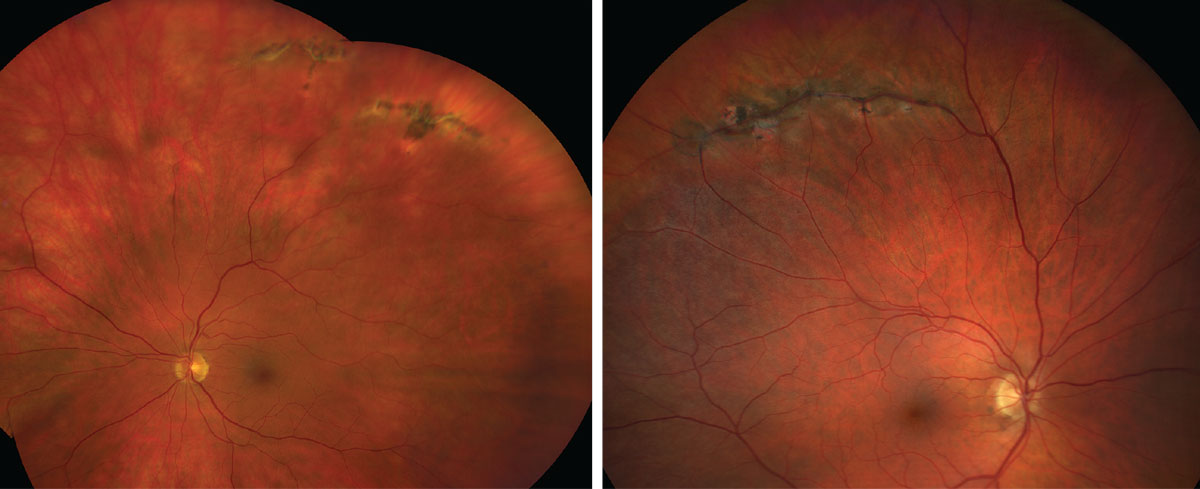 |
|
PVDs are likely to cause delayed retinal tears, study finds. Photo: Jay M. Haynie, OD. Click image to enlarge. |
Retinal tears are somewhat common, but conflicting data has complicated patient counseling as well as the ability to set up proper follow-up appointments. In a recent study, researchers examined the long-term incidence and timing of delayed retinal tears following symptomatic acute posterior vitreous detachments (PVDs) without concurrent tears and also identified factors that may increase the risk of developing tears.
A total of 389 patients with acute, symptomatic PVD without concurrent retinal tears were examined. Kaplan-Meier analysis showed that 7.39% of eyes developed delayed retinal tears by 6.24 years after initial PVD diagnosis, with many developing tears well after a typical six-week follow-up. Of these tears, 50% occurred within 4.63 months of PVD diagnosis and 63.46% occurred within one year of diagnosis.
Most previous studies had a short maximum follow-up period of just six weeks. “Our study, on the other hand, included a much longer follow-up period of over six years, and the Kaplan-Meier analysis captures patients who may have been noncompliant with follow-up and therefore allows us to conclude that while 45% of delayed tears occurred before six weeks, the majority of tears (55%) were, in fact, found after six weeks, accounting for 2.83% of all eyes that experienced an acute, symptomatic PVD,” the authors explained in their article for the Ophthalmology journal. “This suggests that previous studies with similar definitions for acute, symptomatic PVDs could have underestimated the actual incidence of delayed retinal tears.”
Lattice degeneration was found as a likely risk factor for delayed tears, given the retinal stretching and thinning. Lens status and age were not risk factors, and in contrast with previous studies, this study found that refractive error, sex, race and ethnicity were not associated with delayed retinal tears.
These findings can guide clinicians in establishing optimal follow-up protocols for patients with acute, symptomatic PVD, the authors concluded.
Jindachomthong KK, Cabral H, Subramanian ML, et al. Incidence and risk factors for delayed retinal tears following an acute, symptomatic posterior vitreous detachment. Ophthalmology. October 17, 2022. [Epub ahead of print]. |

